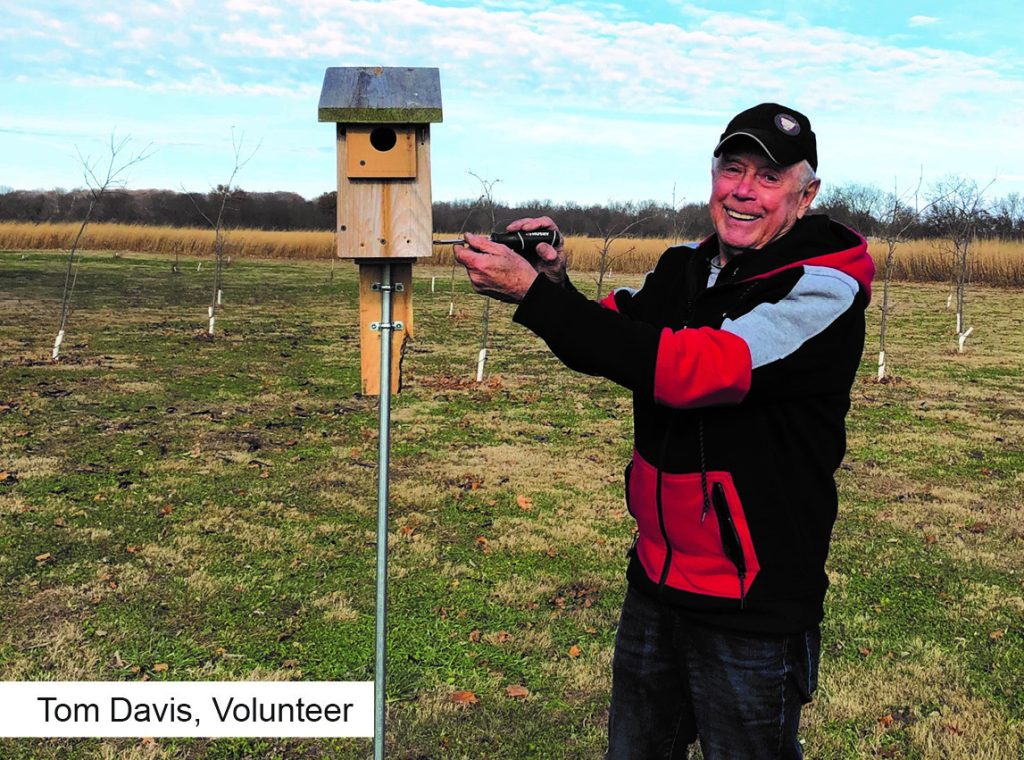By Penny Dunbar, National Trail Parks & Recreation District
Bluebirds are one of our most celebrated birds and a welcome sign of spring. No matter how often you see this cute, small brightly colored bird, it remains an exhilarating experience. The Eastern bluebird (Sialia sialis) is a type of thrush, and males deliver a soft, pleasing warbling song. Managing habits for bluebirds is important and parks are a prime location for conservation efforts.
In the early 1900s the Eastern Bluebird was one of rural Ohio’s most common songbirds. Due to a loss of habitat, competition for natural nesting sites and invasive species, the bluebird population declined as much as 90%. However, bluebirds have made a significant comeback primarily because of the management activities of landowners, farmers and park systems
There are several must-haves for bluebird habitats. They need the right amount of space to hunt species and the right type of native plants. Bluebirds prefer open habitats over forested or dense brushy areas. They prefer an open grassy space, short grass, and perches to find their favorite foods, which include insects and fruit. Bluebirds are secondary cavity nesters and cannot excavate their own nesting site, and rely on holes excavated by woodpeckers or our handiwork to build a safe home in which to lay eggs.
For the last several years, dedicated NTPRD volunteers have worked alongside park staff on a project to install bluebird nest boxes in our local parks to increase the availability of suitable nesting sites. A successful project requires nest boxes be placed in the right location, protected, monitored and cleaned. NTPRD maintenance staff constructed the boxes and placed them throughout Rebert Pike Nature Park and the NTPRD Buck Creek Nature Park in early March to be ready for nesting bluebirds in April.

In the spring of 2021, naturalist volunteers began monitoring the nest boxes soon after installation. They proactively maintained the nest boxes and kept track of bluebird nesting activities to ensure nesting success. The data collected was very useful to monitor bluebirds and their health, as well as to know what birds were nesting in particular areas within the parks. The first bluebird nest was found in early April. It was with great surprise that after cleaning out a nesting box, it was not long before another pair of bluebirds nested in the same box. Both nests were successful in producing ten bluebirds.
Nest boxes are also found at Old Reid Park and the Kirby Preserve. Many of the nest boxes in this location were older and in need of repair. A park volunteer renovated several of the existing boxes to make them usable again.
Thanks to the efforts of staff and volunteers, the bluebird nest box project has been a success. In order to expand the population of this lovely songbird, plans are underway to place bluebird nest boxes in other locations in the parks. Working together, we can make a big difference in conservation efforts.

